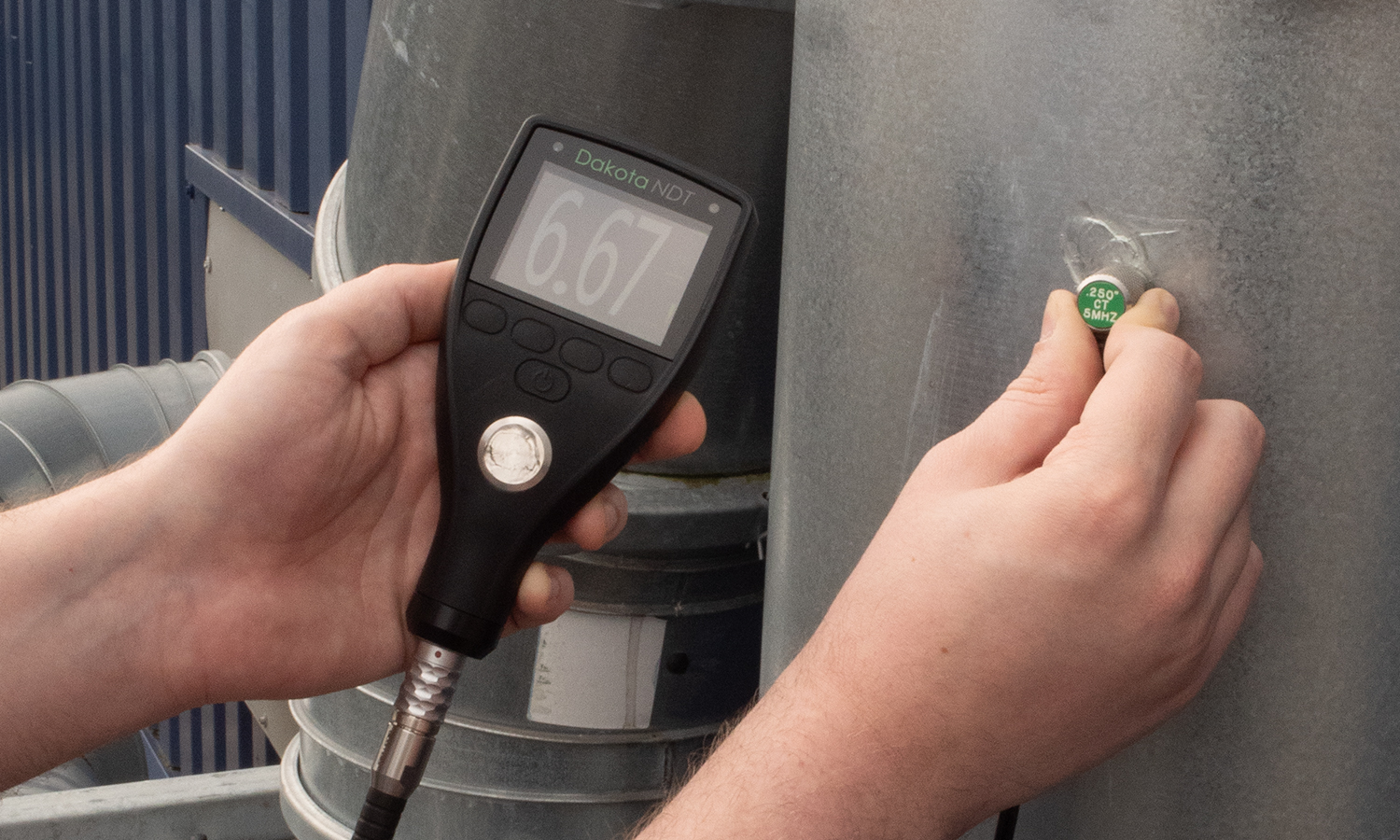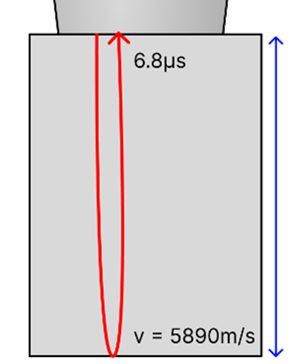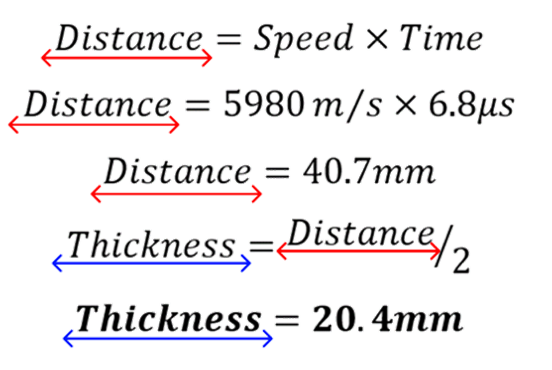Ultrasonic Thickness Measurement for Goods-In Quality Inspections with the Dakota CX Corrosion Thickness Gauge
Application Overview:
As a Goods-In quality inspector, one of your primary responsibilities is to ensure that incoming materials and components meet the business’ required specifications before they make their way into production. Among the various inspection techniques available, ultrasonic thickness measurement stands out as a non-destructive and highly accurate method for evaluating the thickness of metallic and non-metallic materials and goods to verify their dimensions quickly, easily and efficiently.
Material Velocity:

Ultrasonic thickness gauges measure the time it takes for a high-frequency sound wave to travel through a material and reflect off its back surface. To accurately calculate an object’s material thickness from this time measurement, the gauge needs to know the velocity of sound through that specific material.
Different materials transmit sound at different velocities based on their density and elasticity. The Dakota CX Corrosion Thickness Gauges come pre-programmed with 39 velocities for common industrial materials like steel (5920m/s), aluminium (6300m/s), plastics (~2200m/s) and others. However, for maximum accuracy, we always recommend calibrating the gauge to the specific material batch being measured.
Calibration:
The Dakota CX Corrosion Thickness range has a number of different ways to set the material velocity to that of the parts you’re measuring, and the process of doing so is known as calibration. The gauges feature 1-point and 2-point calibrations, as well as Velocity and Material selection.


Velocity Calibration:
Velocity calibration allows the user to input a custom value in between 1,250 and 10,000m/s (or in/µs) if they already know the velocity, such as in scenarios where the goods are certified to a certain speed.
Material Calibration:
Material calibration allows the user to select a material type from the gauge’s internal database of 39 industry reference values.
1-Point Calibration:
1-point calibrations require the user to measure a single sample of the material batch with a known thickness. This known thickness is then entered into the gauge to calculate the material velocity.
2-Point Calibration:
2-point calibrations are very similar to 1 point calibrations, but as the name implies it uses two different thicknesses of the material instead of just one.
With 1 and 2 point calibrations, the gauge calculates the material velocity by dividing the distance by half of the measured round-trip time. 2 point calibrations are preferable because they’re more accurate, and they also automatically set the zero offset.

Zeroing:
The Dakota CX Corrosion Thickness gauges feature an integral zero-disk that allows for easy zero offset calibrations. This disk has a precisely known thickness, so taking a measurement on it allows the gauge to automatically compensate for any minor sound delays from probe wear or couplant variations. Performing this simple zeroing process helps ensure consistently accurate readings over the lifetime of the gauge.
Recording Data:
The Dakota CX Corrosion Thickness Gauges allow users to save detailed data logs for their thickness measurements, including the material velocity, GPS-tagged measurement location, time and date stamps, as well as any notes or pictures the user requires for documentation purposes. Additionally, DakMaster is a powerful and free data management software that allows you to easily transfer all of your measurement data from the gauge to your PC. With DakMaster, you can generate reports, analyse data trends, and maintain a comprehensive record of all incoming goods inspections to meet quality audit requirements.
Dakota gauge used in this application:
For more details on how the Dakota CX Corrosion Thickness Gauge can give an advantage to your inspection process.
